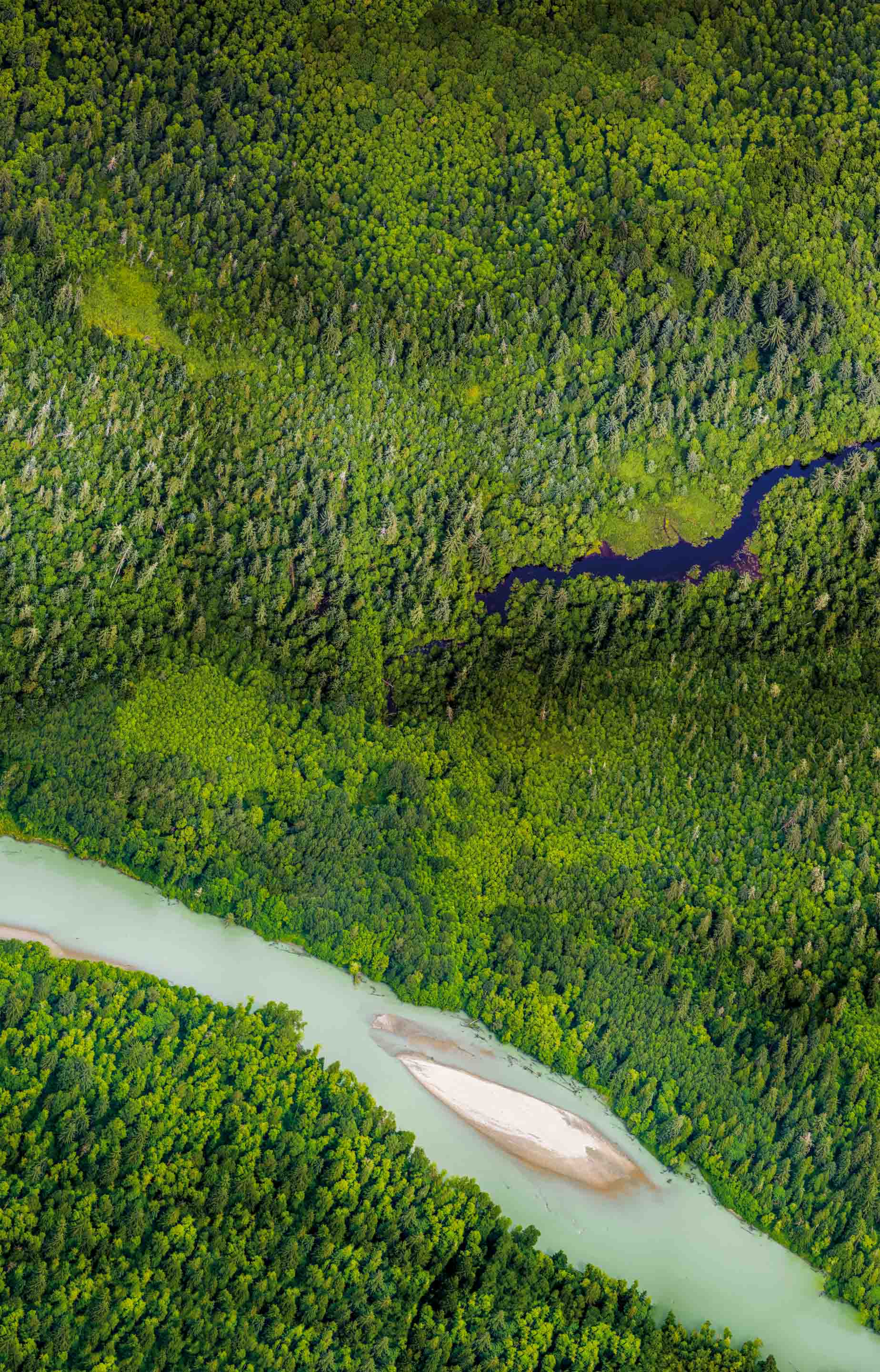Rainforest protection in ESG reporting
Overview: Duty and requirement in ESG reporting and the importance of nature conservation.
Orientation in ESG reporting: What applies to companies?
E for Environment, S for Social and G for Governance: this is what the abbreviation ESG stands for. ESG is a voluntary framework according to which companies can evaluate their sustainability performance in the form of ESG reporting.
Nature conservation and rainforest protection can be an important part of an ESG report and fulfill necessary guidelines and criteria. But the protection of our tropical forests and last remaining wilderness is much more than a formality in ESG reporting or CSR activities.
More and more people are fed up
Oracle + Savanta's 2022 ESG GLOBAL STUDY shows: 80% of people are frustrated with the lack of progress on sustainability and corporate social responsibility.

ESG reporting in figures: between expectations and great opportunities
of the investors
would invest more in companies that protect the climate.
PwC: Global Investor Survey 2024
of the people
would spend more money with companies that make clear progress in the environmental and social areas.
Oracle + Savanta: 2022 ESG GLOBAL STUDY
of the customers
question sustainability claims before making a purchase.
Simon-Kucher: 2024 Global Sustainability Study
ESG reporting in figures: between expectations and great opportunities
Companies that implement ESG now can only benefit.
Companies that neglect sustainability are massively disappointing.
(Oracle + Savanta: 2022 ESG GLOBAL STUDY)
80 %
of people would spend more money with companies that make clear progress in the environmental and social areas.
81 %
of people would invest more in companies that implement ESG.
81 %
of people would want to work for companies that take responsibility.
67 %
of people would turn their backs on a brand that has a need to catch up in terms of nature conservation and social issues.
80 %
of people are frustrated with companies that do not make real progress in environmental protection and social initiatives.
The importance of ESG: what you should know
There are specific criteria for the three areas of environment, social affairs and corporate governance that you can use to measure your company's sustainability performance:
- E - Environment: Climate protection, emissions, resource consumption and biodiversity
- S - Social: Working conditions, human rights and inclusion
- G - Governance (corporate management): Transparency, ethics and compliance
Is there an ESG obligation and who is affected?
There is no so-called "ESG obligation". Rather, there is a reporting obligation (EU directive) in accordance with the CSRD (Corporate Sustainability Reporting Directive). When which companies must comply with this obligation is regulated in stages:
- From 2024 (report 2025): For companies that were already subject to the Non-Financial Reporting Directive (NFRD).
- From 2025 (2026 report): For all large companies that meet the CSRD criteria (two out of three: over 250 employees, € 40 million turnover, € 20 million balance sheet total).
- From 2026 (report 2027): For capital market-oriented small and medium-sized enterprises (SMEs).
In addition to the general reporting obligation, guidelines and criteria apply according to which the sustainability assessment must be carried out:
- CSRD & ESRS: From 2024/25, large and capital market-oriented companies in the EU will be obliged to report in accordance with the European Sustainability Reporting Standards (ESRS). Particularly relevant: ESRS E4 Biodiversity and Ecosystems.
- EU taxonomy: classifies economic activities according to environmental sustainability.
- EUDR (EU Deforestation Regulation): From 2025, products such as soy, beef, palm oil, cocoa, coffee and wood must be verifiably deforestation-free.
CSRD vs. ESG: What's the difference?
Put simply: ESG describes the criteria, CSRD makes reporting on them mandatory. ESG reporting is therefore no longer voluntary for the companies concerned.
ESG (Environmental, Social, Governance) is a voluntary framework for assessing a company's sustainability performance.
The CSRD is a binding EU directive that obliges companies to report on their sustainability activities. It regulates how and what a company must report on, thus creating a uniform and legally prescribed standard.
Responsible. Act.
Customers, employees and investors expect the companies whose services and products they buy, work for or invest in to act responsibly and sustainably. By protecting nature in your company , you are not only protecting the last wilderness areas on our planet. You are taking responsibility.
These guidelines are voluntary, but strategically valuable
VSME (Voluntary Sustainability Reporting Standard for SMEs): voluntary EU standard for small and medium-sized enterprises that are not directly covered by the CSRD. It reduces the bureaucratic burden, but creates comparability and transparency along the supply chain.
GRI 101: Biodiversity - new standard with a focus on nature & biodiversity.
CDP & TNFD - Reporting framework for nature-related risks and opportunities
B Corp & ISO 14001 - certifications for holistic sustainability.
SDG reporting - reference to global UN sustainability goals, e.g. SDG 15 "Life on land". In the article on the importance of the SDGs, you can find out which SDGs Wilderness International fulfills.
Our tip: Even if your company is not required to report directly, it is often affected indirectly - by ESG requirements and values of your customers, banks or investors as well as your employees.
Why protect rainforests as a company?
The protection of existing tropical and temperate rainforests is one of the most effective levers for preserving biodiversity and stabilizing the global climate. Companies that protect rainforests today are investing directly in the stability of ecosystems, which in turn keep our economy running.
Rainforest protection is biodiversity protection
Rainforests are not only the most important allies in the fight for greater climate stability:
- they produce rain,
- purify air and water and
- store CO2.
They are also the most species-rich ecosystems on our planet. As gigantic treasure troves of nature, they are home to an incomparable variety of animals, plants and microorganisms. If a rainforest area is destroyed, this biodiversity, which has grown over thousands of years, is irretrievably lost.
Biodiversity as an economic factor
For companies, this loss of biodiversity is far more than an ecological problem: it is a significant business risk along the entire value chain. Over 50% of the world's gross national income (GDP) depends directly or indirectly on stable ecosystems. Functions such as plant pollination or natural pest control act as "nature's dividends": they are the basis for raw materials, functioning supply chains and markets.
Insect mortality in Germany alone causes losses of around 3 billion US dollars per year due to crop failures.
This example clearly shows that biodiversity is a key economic factor.
Their protection does not contradict economic activity, but is a necessary prerequisite for it. Protecting the rainforests is therefore a direct investment in the economic stability of companies and their entire value chain.
5 reasons for rainforest protection as part of the strategy

1. Rainforest protection ensures climate stability: Rainforests store enormous amounts of CO₂ and thus stabilize the global climate. This is the basis for economic planning and therefore investment security as well as the (careful) supply of raw materials.

2. Lower risks thanks to old-growth forest protection: Protecting existing rainforests is more cost-efficient and sensible than financing the billions in consequential costs of climate change, drought and species loss.

3. Learning from nature: Many innovations, new technologies and products are inspired by nature and its biodiversity. Protecting rainforests ensures long-term access to this important source of knowledge and inspiration.

4. Genuine sustainability is a competitive advantage: More and more customers, investors and employees prefer companies that operate responsibly. Rainforest protection thus strengthens brands and market position.

5. Nature conservation as a partnership bridge: Joint conservation projects and collaborations support cooperation between states, organizations and civil society. This stabilizes political relationships, economic relations and global supply chains.
donation
protects
rainforest
forever and ensures that
of CO2
permanently as biomass of the forest.
Protecting the forest protects the economy
Rainforest protection is not a "nice-to-have", but affects every industry - directly or indirectly via climate, markets and regulatory requirements.
How companies can use rainforest protection in ESG reporting
The protection of rainforests is not only ecologically effective, but can also be strategically anchored in your ESG reporting by meeting specific environmental (E) and social (S) criteria:
Forest protection with reporting relevance: concrete examples and ESG criteria
CSRD / ESRS E4: Identify forest protection as a concrete measure for biodiversity and ecosystem services.
EU taxonomy: Rainforest protection can be counted under environmental goal 6 ("Biodiversity & ecosystems").
GRI 101: Transparency about positive impacts outside the supply chain.
CDP & TNFD: Report on forest protection as part of risk management and as a nature-based solution.
SDGs: Clear reference to SDG 15 "Life on land", SDG 13 "Climate action" and SDG 6 "Clean water".
Contribution claim: Companies can credibly communicate their contribution to biodiversity protection - without getting into compensation debates.
With rainforest protection, you create visible impact and at the same time reporting relevance - for mandatory standards such as CSRD as well as for voluntary frameworks.

If you have any questions about how our wilderness protection can contribute to your company reporting, please get in touch with Chris.
